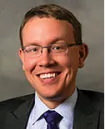On December 18, 2017, the Ninth Circuit held in Benjamin v. B&H Education, Inc., F.3d, No. 15-17147, 2017 WL 6460087, that cosmetology students were not employees of their schools. In doing so, the Ninth Circuit joined the Second and Eleventh Circuits in adopting the primary beneficiary test to determine whether students are employees. The Benjamin case was the first to reach a decision from the Ninth Circuit and joined many other jurisdictions that had previously dismissed virtually identical cases (including a recent affirmance of summary judgment by the U.S. Court of Appeals for the Seventh Circuit).
The Benjamin plaintiffs were former students who alleged that under federal, California and Nevada law, they should have been paid wages as employees for the time they spent practicing skills in the schools' clinic classroom and performing concierge duties (e.g., cleaning, sanitizing, greeting clients, recommending hair products, etc.). U.S. District Judge Vince Chhabria for the Northern District of California granted summary judgment for the school, holding that "Plaintiffs were not employees under federal or state law because Plaintiffs were the primary beneficiaries of the educational program and they had not shown that [the cosmetology school] subordinated the educational function of its clinics to its own profit-making purposes." [Note: Duane Morris represented B&H Education in this case in the Northern District of California.]
The Ninth Circuit affirmed. With regard to the federal claims, the Benjamin court concluded that "the primary beneficiary test best captures the Supreme Court's economic realities test in the student/employee context." In doing so, the court rejected the Department of Labor's intern test as being "too rigid" and not in accord with case law. The Ninth Circuit then looked to nonexhaustive factors to conclude the students were not employees. Such factors included that: 1) no students had expected to be paid, 2) students "received hands-on training in the clinic and academic credit for the hours they worked," 3) the "clinical work corresponded to [the students'] academic commitments," 4) the students did not participate in the clinic program longer than was required by state law, 5) students "did not routinely displace the work of paid employees," and 6) students "had no expectation of employment [with the schools] upon graduation." In short, all of the factors confirmed that the plaintiffs were the primary beneficiaries of the time they spent completing their course curriculum and were thus never employees of the school.
With regard to the state law claims, the Ninth Circuit confirmed that Nevada follows federal law, so plaintiffs' claims failed for the same reasons their federal claims failed. The court also refused to apply California's joint-employer "control" test to the student-school context because "schools typically exercise significant control over their students, but that does not make them employers." Thus, the Ninth Circuit reasoned that the California Supreme Court would rather apply a test that is "similar to the FLSA primary beneficiary test." Under that test, the plaintiffs were not employees of their school.
Conclusion
The Ninth Circuit's opinion has important lessons for schools with students who learn in a clinic by providing services to paying members of the public. Specifically, schools should take care to inform students that they are not employees and will not be paid a wage. All tasks in the clinic should be tied to an educational goal with documentation and curriculum to support the claim.
For Further Information
If you have any questions concerning this Alert, please contact Edward Cramp, Aaron T. Winn, Bryce Young, any member of the Higher Education Practice Group; any member of the Employment, Labor, Benefits and Immigration Practice Group; or the attorney in the firm with whom you are regularly in contact.
Disclaimer: This Alert has been prepared and published for informational purposes only and is not offered, nor should be construed, as legal advice. For more information, please see the firm's full disclaimer.


